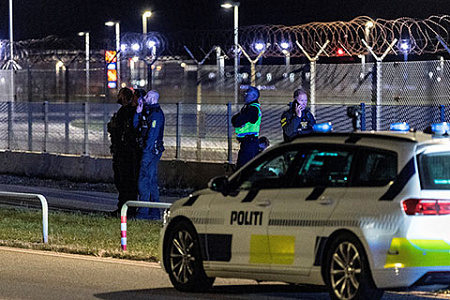
European nations are moving to establish a high-tech “drone wall” along the continent’s eastern flank, a plan that has gained new urgency following mysterious drone sightings over Scandinavia. Denmark, which previously considered its skies secure, will now join a September 26th meeting to discuss the creation of a coordinated anti-drone defense system, a direct response to recent incidents that forced the temporary closure of airports in both Denmark and Norway.
The initiative, spearheaded by EU Defense Commissioner Andrius Kubilius, initially focused on the so-called “frontline” states: Estonia, Latvia, Lithuania, Finland, Poland, Romania, and Bulgaria. The inclusion of Denmark signals a widening concern across Northern Europe. Non-EU member Norway, which was also affected by the drone activity, is pursuing a similar defense enhancement but will coordinate its efforts through NATO rather than the European Union.
While officials in both Copenhagen and Oslo have indicated that a “Russian trail” is the most likely explanation for the drones, they have cautiously refrained from making direct, formal accusations against Moscow. Norwegian Prime Minister Jonas Gahr Støre highlighted the drone events alongside three separate incidents this year of alleged Russian military aircraft violating his country’s airspace, painting a picture of escalating pressure. Danish Prime Minister Mette Frederiksen has echoed the sentiment of high probability regarding Russian involvement.
Kremlin spokesperson Dmitry Peskov has categorically rejected the allegations, dismissing them as unsubstantiated claims. He stated that without concrete proof, Russia would no longer pay attention to such accusations, which he characterized as baseless. This denial stands in stark contrast to the growing consensus within Western alliances that Moscow is methodically testing their defensive readiness.
This sentiment was reinforced by NATO Secretary General Mark Rutte, who commented on rising provocations following a meeting prompted by Estonia. Tallinn had reported that Russian aircraft lingered in its airspace for 12 minutes, an act it decried as a deliberate provocation. The drone sightings in Scandinavia are being viewed within this broader context of a pattern of Russian actions designed to probe Western defenses.
However, the incidents have exposed a tactical divide within the West on how to respond. While leaders like Czech President Petr Pavel have taken a hardline stance, advocating for shooting down any aircraft that violate allied airspace, the leadership of both NATO and the EU appear to favor a more cautious, wait-and-see approach. This prudence is a source of frustration for the frontline states that feel most threatened, but it is preferred by other members keen to avoid a dangerous escalation and any risk to their citizens’ lives.
